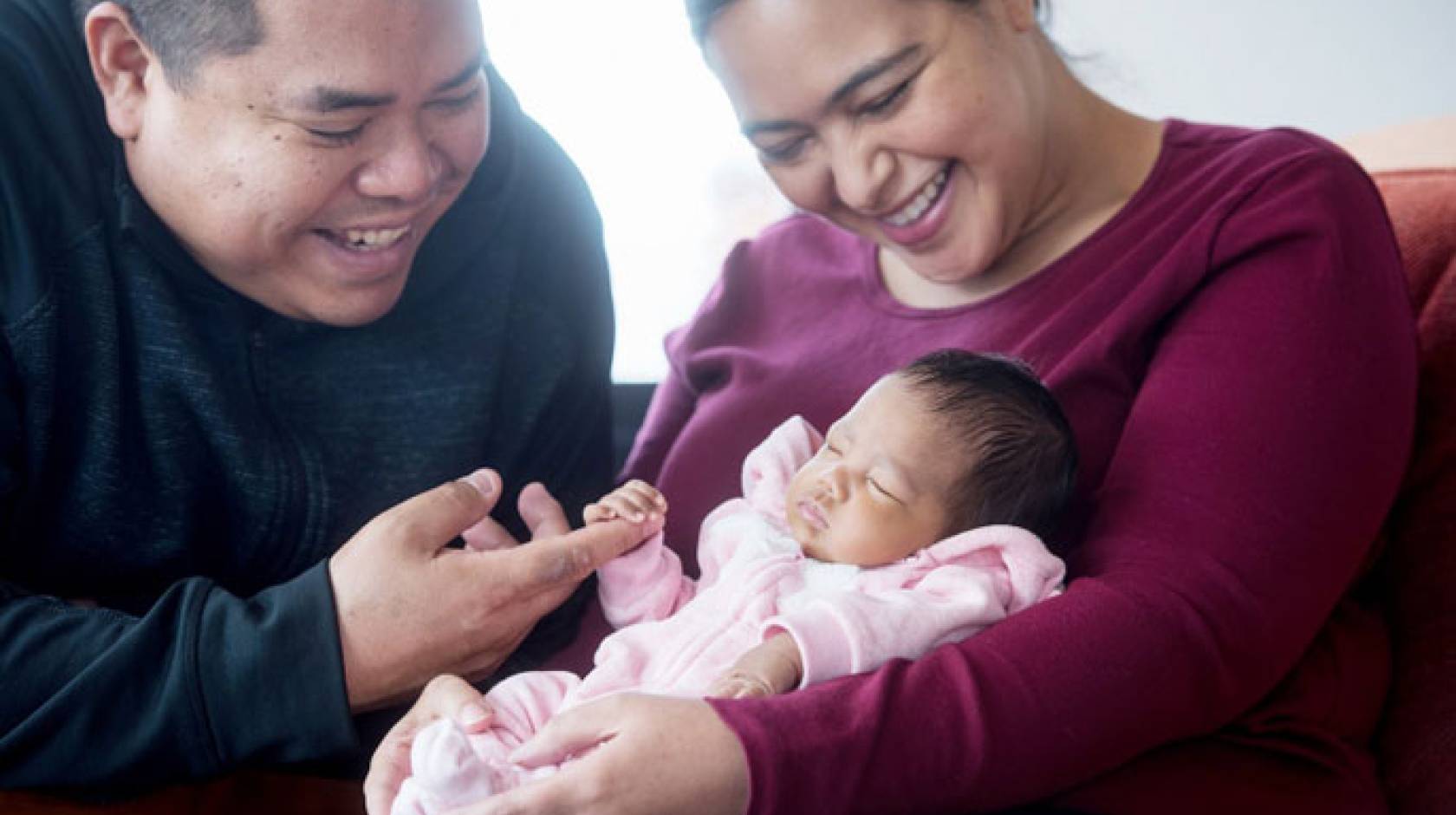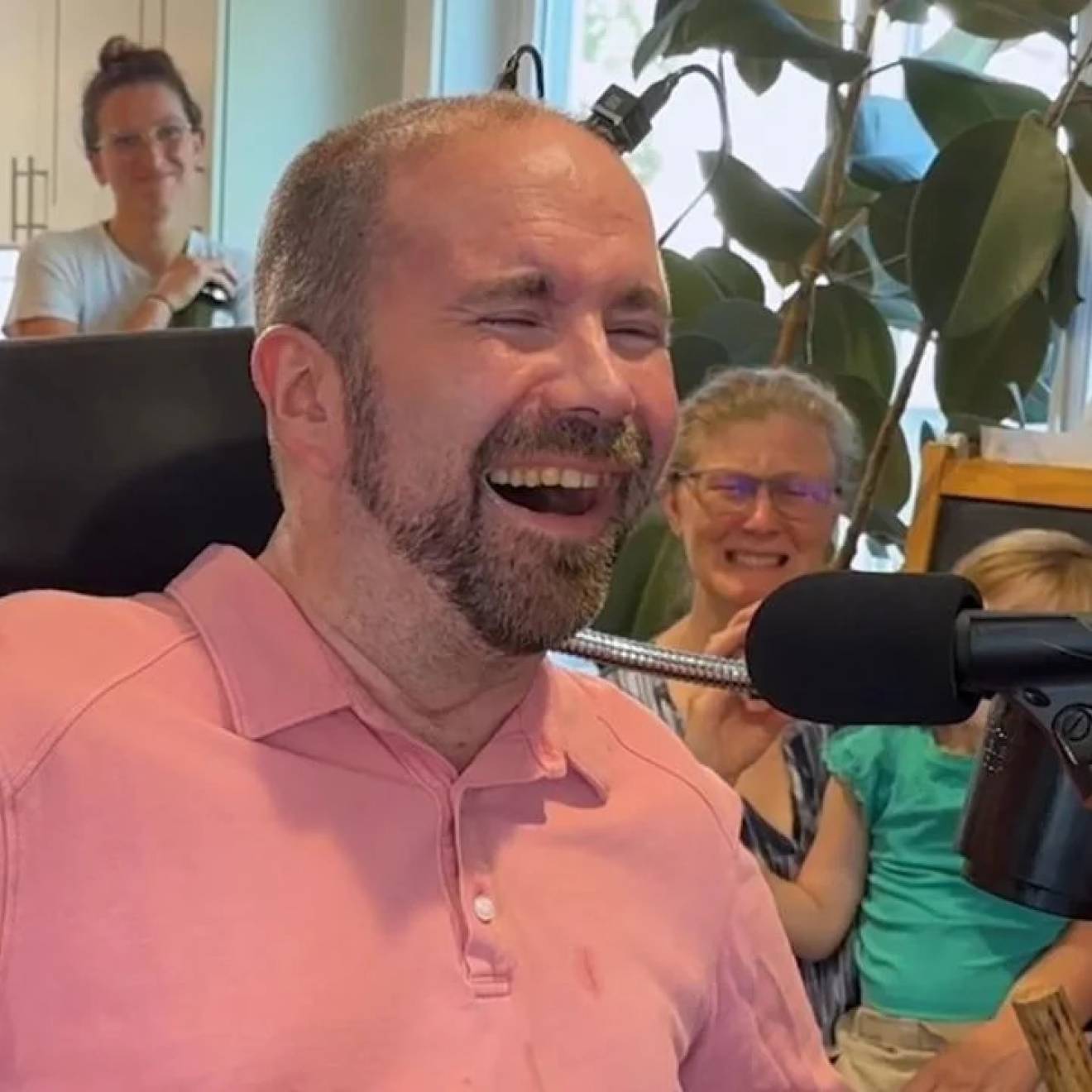Suzanne Leigh, UCSF

UC San Francisco researchers have safely transplanted a woman’s stem cells into her growing fetus, leading to the live birth of an infant with a normally fatal fetal condition. The infant, who had been critically ill during the second-trimester of pregnancy due to alpha thalassemia, is the first patient enrolled in the world’s first clinical trial using blood stem cells transplanted prior to birth.
The infant was born at UCSF Medical Center at Mission Bay in February, four months after undergoing the transplant to treat the blood disorder, which is caused by a gene carried by nearly 5 percent of the world’s population.
While the ultimate goal will be to assess whether the mother’s stem cells integrate, or engraft, in the fetus’ bone marrow and generate healthy blood cells throughout the child’s life, this phase 1 trial aimed to determine first whether the procedure — which includes infusing the mother’s stem cells along with several blood transfusions — would be safe.
“We are encouraged by how well she and her mother have tolerated this complex treatment,” said Tippi MacKenzie, M.D., a pediatric and fetal surgeon at UCSF Benioff Children’s Hospital San Francisco, who performed the pioneering transplant after a decade of research. Normally, women whose fetuses are diagnosed with alpha thalassemia are given a grim prognosis and often terminate the pregnancy due to the low likelihood of a successful birth.
“Her birth suggests that fetal therapy, including fetal transfusions, is a viable option to offer to families with this diagnosis,” MacKenzie said.
Credit: UCSF
Unique expertise from UCSF Benioff Children’s Hospitals

Credit: Noah Berger
The infant, whose parents were unknowingly carriers of the disease, was born at 37 weeks’ gestation weighing just under 5 lbs. She has been discharged from the hospital and has returned with her family to their home in Hawaii, although she will require further blood transfusions or another stem cell transplant to remain healthy.
During the pregnancy, MacKenzie’s team at the UCSF Fetal Treatment Center treated the fetus with regular in utero blood transfusions, after a medical center near the family’s hometown detected life-threatening swelling, or hydrops, during an ultrasound. The swelling, which included an enlarged heart, was the result of the body’s response to severe anemia and lack of oxygen, which is the hallmark of alpha thalassemia major, the most dangerous variant of the disease.
“Intrauterine blood transfusions were needed to treat the hydrops before the stem cell transplant could be performed,” said Juan Gonzalez Velez, M.D., Ph.D., an obstetrician/gynecologist at the UCSF Division of Maternal-Fetal Medicine, who performed the transfusions. “During the last 30 years, this has been the treatment of choice for patients developing severe fetal anemia and we think that fetuses with alpha thalassemia can also benefit from these transfusions.”

Credit: Noah Berger
The fetus' poor prognosis improved slowly with each transfusion during the pregnancy, Gonzalez Velez said. The stem cell transplant took place during one of those transfusions.
The clinical trial, which was funded by a grant from the California Institute for Regenerative Medicine, brings together the unique expertise of both UCSF Benioff Children’s Hospitals. The UCSF Fetal Treatment Center, in San Francisco, is the birthplace of fetal surgery and continues to offer life-saving interventions for fetuses with multiple birth defects. UCSF Benioff Children’s Hospital Oakland established its thalassemia program in 1991 to provide multidisciplinary care to the growing number of thalassemia patients. It is an international leader in stem cell and gene therapy for beta thalassemia.
Disease more common in people from Southeast Asia, India, Middle East

Credit: Noah Berger
The gene for alpha thalassemia is carried by a significantly higher percentage of people in China, the Philippines, Thailand, India and the Middle East — parts of the globe where many Americans, especially those in the San Francisco Bay Area, claim their ancestry. In alpha thalassemia major, progressive anemia and heart failure develop before birth, causing developmental impairment if treatment is delayed. Treatment includes lifelong blood transfusions starting in the second trimester, followed by further transfusions after birth, or a bone-marrow transplant with a matched donor in childhood. In most cases, the fetus dies in utero or the pregnancy is aborted due to lack of treatment options.
In utero stem cell transplantation involves extracting bone marrow from the pregnant woman between the 18th to 25th week of pregnancy. The bone marrow cells are processed and hematopoietic cells — immature stem cells that can evolve into all types of blood cells — are singled out from the mix. They are then injected through the woman’s abdomen into the umbilical vein of the fetus, where they can circulate through the bloodstream, developing into healthy, mature blood cells.
In utero stem cell transplants were initially attempted in the 1990s to treat fetuses with known genetic disorders, but were only successful in treating immune deficiency disorders. With current advances in the understanding of the fetal immune system, the researchers were able to design a new strategy of infusing a large dose of the mother’s cells, which they hope will have a greater chance of success. After the team has established safety in 10 patients, it will assess whether or how the protocol needs to change further to provide an effective therapy. Even if a small percentage of the mother’s cells engraft, the patient may be able to get a second “booster” transplant from the mother in the future.
“Once universally fatal, thalassemia can now be managed as a chronic disease,” said Elliott Vichinsky, M.D., who is overseeing the baby’s treatment and is the founder of the Northern California Comprehensive Thalassemia Center at UCSF Benioff Children’s Hospital Oakland. “In utero stem-cell transplantation may take it one step further: as a disease that can be successfully treated before birth.”
Vichinsky said that future plans may include using in utero stem cells to treat beta thalassemia, the more common type of the disease, as well as sickle cell anemia and other serious and life-threatening genetic disorders.

